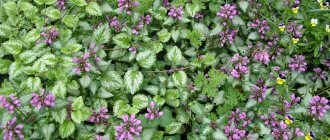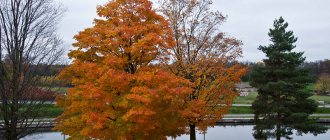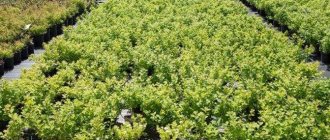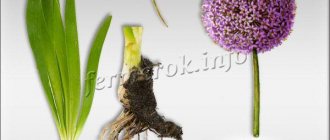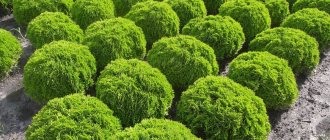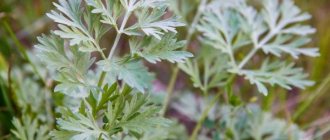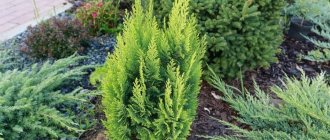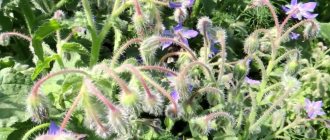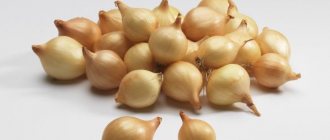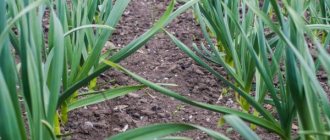Quite often in flower beds and summer cottages you can see a tall plant crowned with beautiful purple balls. This is an Aflatun onion. This type of onion appeared in our country as decorative plantings relatively recently, but its distribution area is constantly increasing. And there are reasons for this. The plant is very unpretentious, but has many useful properties. In addition to the function of decorative decoration, it is also used for food. And besides, a wonderful honey plant. But in order for a guest from the mountainous regions of Central Asia to please the eye, it is necessary to plant it correctly, having first selected high-quality planting material. And don’t forget to take care of your plants.
Origin, description of aflatun onion (aflatunense allium)
Ornamental plants ALLIUM (allium) belong to the onion family. The group of anzurs, which also includes Suvorov, high onion and other representatives of the flora, similar in morphological characteristics. The name most likely comes from the ancient Celtic all, that is, “burning.” They do not necessarily taste bitter, but containing essential oils, they emit a sharp and peculiar odor. But the smell of aflatun onion ( aflatunense) is quite pleasant and this attracts insects and even bees.
This species can be found in Kyrgyzstan on the pass of the same name in the Chatkal ridge. Endemic. That is, it grows only in this place on Earth. It was described and classified by scientists and from there it was brought by amateur gardeners. Very early in the spring, thin arrows appear in the flower beds, which grow quite quickly and soon their length reaches 1.3–1.5 meters. The leaves differ in size from ordinary garden onions. They are wider and larger. Each plant can have a different number of them, but on average it grows up to 7 pieces. After some time, when the average daily temperature becomes higher, a peduncle appears. And by the end of spring, a ball of a beautiful purple hue is formed, consisting of many star flowers. After the flowering process ends, a box appears in which black seeds ripen. Thus, the Aflatun onion has the following features:
- bulb of medium or large size, round-conical, generally up to 5 cm, grayish in color;
- stems grow up to one and a half meters in height;
- The leaves are belt-shaped, with a bluish tint. The edges are smooth. Up to 10 cm wide;
- the growing season begins in very early spring;
- flowers are star-shaped, collected in a ball with a diameter of up to 10–12 cm;
- towards the end of flowering, seed pods are formed;
- The plant is drought-resistant and cold-resistant.
They are planted in flower beds in the background, because this species has the same feature as cultivated onion varieties: the flowers still remain on the stem, and the leaves begin to turn yellow.
Description of varieties
Due to the fact that there are about 600 varieties of decorative onions, only the most popular ones will be shown in the table below.
Description of varieties
| Name of part/grade | Aflatunsky onion or onion blooming with purple balls (in Latin purple sensation). Perennial - lives up to 5 years; homeland - Aflatun Pass in the Tien Shan Mountains; got its name due to its place of growth | Pink (roseum) |
(homeland - Mediterranean coast)
(homeland - mountainous regions of Central Asia, Iran, Afghanistan)
In addition to varieties, there are groups of xerophytic onions and ephemeroid onions, each of which has its own characteristics:
- in the first, the plants have a slow growth rate and bloom only 4 years after planting;
- in the second, bows are able to withstand drought.
On a note. Since during flowering the leaves turn yellow and dry out first, it is recommended to cut them off so that new ones can grow.
Types of decorative alliums
Currently, about 400 types of decorative bows have been classified. They differ in many ways, but for garden design it is best to systematize them by height:
- low. They grow from only 10 to 30 cm. Representatives: mountain-loving, Karatavsky, bearish and others;
- medium-sized. They reach a height of up to 60 cm, but in most cases do not exceed 40 cm. These include the bow of Schubert, Christophe;
- tall. Reach up to one and a half meters. The most common plants in this group are giant onion and aflatun onion.
Hybrids have already been bred and become popular among the population:
- Gladiator. Hybrid of Aflatun onion and Maklean. The shade of the balls is lighter from soft purple to pink. The height of the hands is not higher than 140 cm;
- Lucy Ball. The result of crossing the Aflatun and Maklean bows. Arrows below (up to 1 meter). Lavender inflorescence;
- Mars. The result of hybridization of aflutan and stipe onions. The inflorescences are very large. About 15 cm in diameter. Peduncle 120 cm high. The only hybrid whose leaves retain color for a long time.
The use of Anzur onion in cooking
The leaves of such a plant have found their use as early greens. They include a large amount of vitamins and beneficial microelements. How do they eat such onions, you ask. Young leaves are often used to make salads, soups and sandwiches.
Onions are eaten only after they have undergone long-term processing. First of all, you need to get rid of the sharp sulfurous smell; for this, the fruits are filled with clean water and changed periodically. On average, this entire procedure takes 1 month. After soaking, the onions are pickled, baked or boiled with honey. You should eat such food infrequently and in small quantities.
Pickled onion Suvorov
Beneficial features
This is not only an ornamental, but also a medicinal plant, since Aflatun onion is a storehouse of substances useful to humans. So, it contains vitamins B and C, essential oils. As well as copper, potassium, calcium, iron, zinc, cobalt, fluorine, iodine and other microelements useful for the human body. They strengthen the immune system, cleanse the blood, and have a beneficial effect on the immune and nervous system. Increase muscle tone and strengthen blood vessels. They improve the structure of hair and nail plates, as the leaves contain carotene, biotin and folic acid. The benefits of decorative bows and their ease of care are described in more detail in this article.
Anzur in the household
This culture, characterized by small round bulbs and bluish leaves with pubescent edges, can be easily, without much effort, grown on your own plot as an ornamental and medicinal crop, the chic purple balls of which will become a worthy decoration for any, even the most modest, flower garden.
The plant is highly resistant to pests and diseases and is very winter-hardy; planted for the winter, it retains its vitality even after the soil freezes and germinates well with the arrival of spring. Do not plant bulbs in places with stagnant water; Anzur onion is sensitive to high soil moisture and may die.
Planting and care
You won’t be able to fully enjoy the beauty of this plant if you just plant it and forget about it. It, like every representative of the flora, loves care, which consists of simple measures that are understandable to any gardener:
Selection and preparation of planting material
Before growing Aflatun onions, you need to decide which planting material is best suited. These can be seeds or bulbs. It is better to sow seeds in cold but moist soil in the spring, not in the fall. But first you need to keep them in the refrigerator. In a damp cloth and plastic bag on the bottom shelf for about a month. You can sow in the fall before winter, but wait until the soil cools to 5–10 degrees.
Read about processing onions before planting in the fall here.
It is better to plant the plant with bulbs, because it begins to bloom in the third, fourth, or even sixth year, and only then do the seeds appear.
Soil preparation
Although onions are not afraid of frost, drought and grow on any soil, in order to get a tall and beautiful plant with an extraordinary color, you still need to prepare the soil for planting it. It should be loose, not loamy, rich in humus. Chernozem or chestnut soil is good. This material will tell you how to plant onions in open ground.
Before planting, the soil must be thoroughly dug up. High-quality preparation is achieved with two-tier digging. This:
- improves drainage;
- structures wet and heavy soils. Compacted soil is not very favorable for the growth of Aflatun onions. Immediately add wood ash before digging. Read about the type of onion root system at the link.
Planting, watering
You need to choose a site that is lit, as this plant does not like shade. The seeds are planted to a depth of 1.5-2 cm. Before planting, the furrows are watered if the ground is not very wet. Mass plantings are done with 50 bulbs per square meter. Planting depth is up to 15 cm. And the distance between them is from 15 to 20 cm. When seedlings appear, it is necessary to water the plants regularly, especially if there is no precipitation for a long time. The rules for watering onions are described here.
Water evaporation in temperate latitudes reaches 5 liters per square meter, so the optimal rate of water consumption during the growing season of the plant is 10 liters per meter. Watering is best done in the evening.
For the plant to grow, it is necessary to constantly eradicate weeds and loosen the soil. Especially after watering to allow air to reach the bulbs.
Fertilizer application
The plant's basic need for nutrients is satisfied by feeding. The presence of nitrogen, phosphorus, potassium, calcium, and magnesium in them is essential. The growth of green mass is facilitated by the application of nitrogen fertilizers. For example, ammonium nitrate. It will be enough to dissolve a matchbox of saltpeter in 10 liters of water. Feed with urea at the rate of a teaspoon per square meter of sowing area.
When the onion begins to shoot arrows, it is necessary to support it with potassium phosphate fertilizers. Then the flowers will not fall off longer.
Ammonium nitrate serves as a fertilizer when growing Aflatun onions
Preparing bulbs for autumn planting
As soon as the flower begins to fade, you need to pick it off. Then the bulb will be stronger, and the inflorescences will be larger and brighter next year.
As soon as the leaves turn yellow, the bulbs are dug up, separated from the stem and dried in a shady place. In September, they are planted in pre-prepared soil fertilized with organic matter to a depth of no more than 15 cm. Each is 15 cm apart from each other. By the end of the growing season, seedlings form a small bulb and a cotyledon leaf. But in the second year, real leaves appear.
In order for the plant to grow tall and have beautiful flowers, the bulbs need to be replanted at least once every four years.
Growing from seeds
This method of reproduction takes the longest and is therefore less commonly practiced. Used for health improvement and cultural renewal. Flowering will occur in at least 3 years, when the formed bulb reaches its optimal size.
Preparation of Aflatun onion seeds involves hardening, soaking and disinfection. Hardening can be carried out in a refrigerator or other place with a temperature of about 5°C. Wrap the seed material in a damp cloth, wrap it in a bag and put it away, remove it periodically and ventilate it. Further storage should be carried out in damp sand or gravel in a cool place. The total hardening time before sowing in spring is about 6 months.
To avoid stratification in the refrigerator, winter sowing is used. 2-3 weeks before frost (late October - early November), plant the disinfected seeds in prepared soil. In this case, hardening occurs naturally.
Before sowing in spring, seed material can be soaked for 8-10 hours in warm water or a biogrowth stimulator, then disinfected with a solution of potassium permanganate or another product. After drying, you can proceed to sowing. Sow to a depth of 2 cm, cover with loose soil, and water. If planting before winter, it is advisable to mulch the top a little.
Application
Aflatun onion is used primarily as an ornamental plant. If you plant it en masse, it forms a beautiful carpet with different shades of the evening sky:
- dark and light purple;
- blue;
- blue.
A cut plant can stand in a bouquet for a long time. Up to two weeks. It can be dried and will not lose color. Therefore, they are used to compose dry compositions. In addition, the tubers can be used as a hair strengthener by rubbing the juice with honey. Aflatun onion flowers attract bees with their scent. These are wonderful honey plants along with clover and sainfoin.
Vegetative propagation method
Another way to grow Aflatun onions is by dividing the bulbs. When grown for many years, the bulb lives for a year, then dies, leaving behind 2 young turnips. But it’s better to dig up, arranging a period of rest. This method can significantly reduce the waiting time for flowering and is used to form onion hills and flower beds.
Remove allium from the beds in July, when the leaves are completely dry. After digging the bulbs, dry them and store them in a ventilated area. In August - September, plant in prepared soil to a depth of 15 cm and water. The planting scheme depends on the planned composition of the flower bed. When planting in open ground, place the plants at a distance of about 15 cm from each other.
Is it possible to eat Aflatun onion?
The plant belongs to the onion or lily genus. There are several hundred species in total. Only 18 of them are edible.
If you rub a leaf, stem or bulb of any plant from this family, an easily recognizable “onion” or “garlic” smell will appear.
This beautiful ornamental plant not only pleases the eye with its bright inflorescences, but can also serve as a seasoning for dishes, as it has a garlicky smell. But you can only add leaves to salads until a certain time, until the arrow appears. Onions can be pickled, however, only after soaking. And in this case it serves as a separate dish (anzur). But during the pickling process, it is necessary to change the brine every three days. Then the beneficial substances remain, and the poisons go away. The book “Wisdom of Ages” (Ancient Tajik Medicine) says that anzur relieves frequent headaches and strengthens memory. Improves vision, hearing and increases potency. It also dissolves and removes stones from the gallbladder and kidneys.
Green onion leaves taste similar to garlic, the bulbs are also edible, reminiscent of radishes and radishes
You can also cook the onions in honey after soaking them in water. But, as with everything, you need to know when to stop.
Onion is a very strong stimulant, somewhat reminiscent of ginseng. But you can’t eat more than three grams of it per day, because large doses can cause an allergic reaction.
Anzur mountain onion medicinal properties
The main disadvantages of this type of plant include:
Flowering onion Anzur
In contrast to the listed disadvantages, its advantages can be noted:
- giant variety;
- Suvorov's bow (named after the famous commander);
- Aflatunsky;
- stalked.
Their main differences lie in the shape and size of the bulb, the type of inflorescences, and the shape of the leaves.
In general, all these types are similar to each other, so they are combined into the general type of Anzur onion.
Read about the benefits of onions here.
And the bulbs are compared to ginseng in their usefulness. They have such effects on the human body as:
- slow down the aging process;
- improve vision;
- sharpen hearing;
- improve memory;
- relieves dizziness.
That is why many gardeners and farmers prefer planting this type of onion.
It begins to grow in early spring and finishes blooming by the end of June.
Read about processing onions before planting here.
After flowering, one sprout can produce many seeds, which can be used for further cultivation.
Read about how to feed onions to make them large in this material.
Pounded bulbs and their juice are used to rub into the head to improve hair growth. This juice is also used to treat eczema.
Using Anzura in cooking
The healing properties of Anzura
In ancient times, the beneficial properties of anzurs were compared with the healing effects of such a famous plant as ginseng.
Propagation of mountain onions
They are propagated using seeds and bulbs.
Diseases and pests of mountain onions
conclusions
Aflatun onion is endemic to the mountains of Kyrgyzstan. Drought-resistant and frost-resistant plant. Can be propagated by both bulbs and seeds. It grows well in any soil, but especially beautiful inflorescences are obtained if the soil is fertile. Does not like to grow in the shade. Looks great in flower beds. But it should not be planted in the first rows, since the growing season of onions is very short, the leaves quickly dry out and lose color. Although the inflorescence is also pleasing to the eye. They are used not only as a beautiful ornamental plant. The leaves can be added in small quantities to salads. Since onions have an onion-garlic flavor, it will give them some piquancy.
When to plant onion seeds read here.
Growing conditions and methods
This plant is, in principle, unpretentious. It can withstand very low temperatures (down to -35 degrees), but it may not wait for the onset of summer heat - the short flowering period makes itself felt. Aflatun onion grows both in illuminated areas and in the shade. But the sun, of course, is preferable for him. As practice shows, the soil is also suitable in different ways. It thrives in mountainous areas, sandy soils and black soils.
This plant is perennial and reproduces either by dividing the bulb or by seeds. It is necessary to plant its bulbs in the fall, when they dry out after digging. If the bulb is divided, each part will grow into an independent plant. Bulb division occurs almost annually. But you can replant it either every year or once every 2-3 years.
If there are no bulbs (you came to visit, saw a flower and want to grow such an onion at home), you can collect seeds from the peduncle, which appear at the end of flowering. True, this method of planting is very long, because in this case the plant will begin to bloom in 2-4 years.
Experienced flower growers love aflatun onion, the cultivation of which does not bring any special problems. And he is not susceptible to illness. The only drawback is that before flowering begins, its leaves turn yellow and dry, which may look unsightly on an organized flower bed or hill.
How to plant allium in open ground
In order for the onion miracle to take root in the garden, and for the work not to be in vain, it is necessary to study and observe all the subtleties. One of the key points is landing time. It is chosen depending on the flowering period of a particular species.
Autumn planting is carried out before the onset of the first cold weather at a stable temperature no higher than +10°C. Suitable for varieties whose flowers bloom early, at the beginning of the summer season.
Spring planting is recommended for varieties that bloom later than others. Gardeners recommend waiting until the ground thaws and the air temperature does not drop below +5°C.
How to choose and prepare a place
The ideal home for allium will be an area that receives the maximum amount of sunlight. The preferred location is on the southern slopes. In shaded places, flowers and leaves lose their elegance: they become smaller and paler. It is also worth paying attention to the fact that tall varieties need protection from the wind, so they should be placed next to larger plants.
Allium is not capricious in terms of the composition of the soil, but it, as a representative of the bulbous plants, is acutely aware of the lack of potassium. Therefore, before planting, it is worth fertilizing the soil with ash, compost and mineral fertilizer.
Another important point is the permeability of the soil. If water lingers in the soil, the bulbs will begin to rot, which will lead to the death of the plant. Therefore, the plant needs a decent layer of drainage or the presence of river sand in the soil.
The depth of the planting holes depends on the size of the bulbs: large samples will need 25 cm, and small ones – 10-15 cm. The distance between them is selected according to the following principle. If you plan to dig up the “roots” for a dormant period and plant them again in the fall, then several bulbs can be placed in one hole at once. This first option is preferable in areas with heavy and wet soils.
If the bulbs remain in the ground for several years, then you need to take into account that they will multiply. In this case, there should be at least 25-30 cm between the holes for tall varieties and 10-15 cm for medium-sized varieties.
After planting, it is important to mulch (cover) the soil with pine needles, leaves or peat mulch. This blanket will protect you from frost and weeds.
